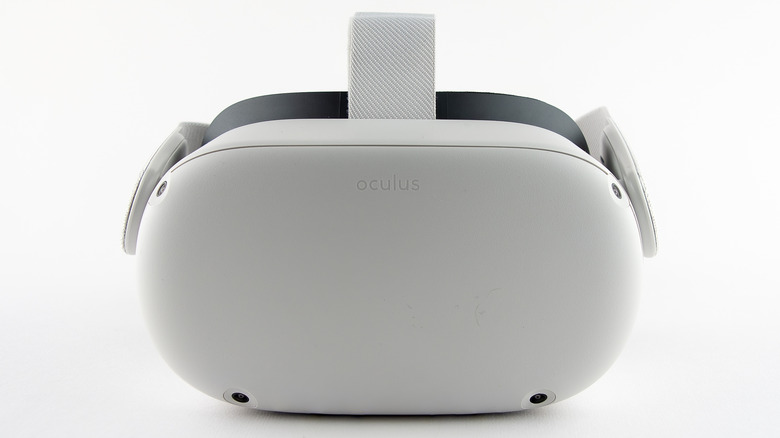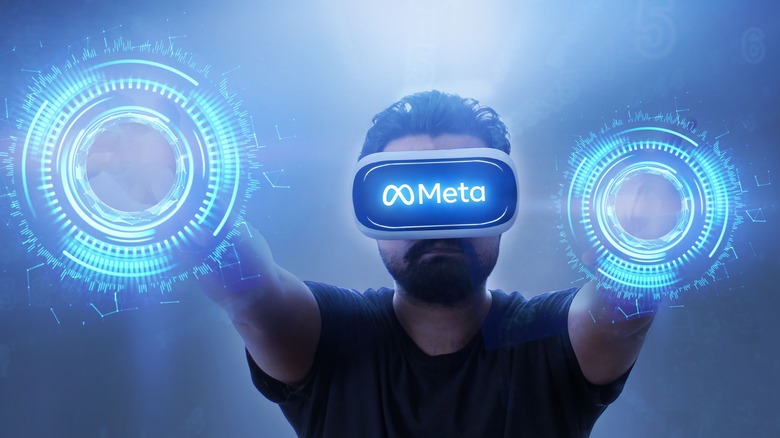Meta Project Cambria Leak Reveals What The Headset May Look Like
Meta, formerly Facebook, named itself after its next big attempt to dominate the world of social networking: the metaverse. The company is no stranger to virtual worlds, especially after its purchase of VR pioneer Oculus, but it needs to step up its game to really deliver on the hype it's generating. Among other things, Meta needs to dive deep into AR territory where physical reality and digital artifacts blend together. To pull that off, Meta needs a new mixed reality headset that supports both VR and AR use cases, and that is exactly what might arrive sometime this year. If this latest leak about Meta's Project Cambria is any indicator, the product could definitely change the game in both performance and design.
It's almost comical how quickly Meta made a U-turn after positioning the Oculus Quest 2 as the best way to experience virtual worlds. The standalone headset offers more freedom of movement than its tethered predecessors like the Rift S and it arrived with a price tag that makes VR more accessible for everyone. Soon after, Meta essentially ditched the Oculus branding for something yet to be revealed and it's taking a few steps in a different direction, one that will enable both virtual reality and augmented reality experiences.
Although both technologies revolve around virtual objects, VR and AR work in slightly different ways, though both still fit the Metaverse narrative. For AR to be truly convincing, though, it has to allow digital objects to overlay on top of (or behind) real-world objects nearly seamlessly — and for that to happen, you will need better sensors and better displays, certainly far more than what is currently offered by the Quest 2 headset.
Project Cambria details leak
There's still no word on what the new product will be called, though speculation has it the headset may be dubbed the Quest 2 Pro or Quest 3. For now, the anticipated device is known by the internal name "Project Cambria," and industry analyst Brad Lynch has a few images to share of what the final design will allegedly look like.
Meta Cambria (SeaCliff) will release later this year
Got confirmation from the supply chain and sourced who’ve tried the device that this is exactly what the final PVT model looks like pic.twitter.com/FQnKDyyjDA
— Brad Lynch (@SadlyItsBradley) April 13, 2022
Despite what it's supposed to be packing inside, the headset appears more refined than any Oculus model released thus far. For example, the images show a complete lack of an uncomfortable strap running over the wearer's head, and the visor itself is considerably slimmer than that of the Quest 2. This may, unfortunately, indicate the headset's processing hardware will be located elsewhere.
Part of the space savings might come from the use of multi-element "pancake" lenses instead of the typical fresnel type. The displays are also reportedly upgraded to dual 2.48-inch, 2160×2160 mini LED panels. The renders also show telltale signs of outward-facing cameras, which are expected to allow for high-resolution passthrough compared to the rather crude version on the Quest 2. The headset is supposed to support not only head tracking but also eye-tracking that could be used for identifying expressions.
There is still no date for when this unnamed headset will arrive, but it is confirmed as on track for a 2022 launch.

